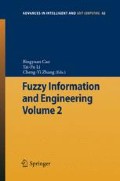Abstract
This paper presented a novel iterated hash function based on a four-dimensional (4D) hyperchaotic Lorenz system by introducing a simple state feedback controller. Besides, a double-pipe structure was employed to design hash function in order to obtain the better cryptographic properties. This function encodes a message of arbitrary length into a hash value with a fixed 128-bit length. Theoretical analysis and computer simulation indicate that the proposed hash function possesses the advantages of irreversibility, weak collision and flexibility. Some of performance analysis such as one-way property analysis and attacks resistance analysis are conducted and the results show that the proposed has function hash desirable security properties.
Access this chapter
Tax calculation will be finalised at checkout
Purchases are for personal use only
Preview
Unable to display preview. Download preview PDF.
References
Kocarev, L.: IEEE Circuits and Systems. Magazine 1, 6–21 (2001)
Chen, G.R., Mao, Y., Chui, C.K.: Chaos, Solitons & Fractals 21, 749–761 (2004)
Yang, T.: Int. J. of Computational Cognition 2, 81–130 (2004)
Menezes, A., van Oorschot, P., Vanstone, S.: Handbook of applied cryptography. CRC Press, Boca Raton (1996)
Wang, X.Y., Feng, D.G., Lai, X.J., et al.: Collisions for hash functions MD4, MD5, HAVAL-128 and RIPEMD. In: Crypto 2004, E-print (2004)
Khadraa, A., Liua, X.Z., Shenb, X.: Automatica 41, 1491–1502 (2005)
Zhou, J., Huang, H.B., Qi, G.X., et al.: Phys. Lett. A 335, 191–196 (2005)
Wang, S., Li, C., Kang, Q., et al.: 7th World Congress on Intelligent Control and Automation (WCICA 2008), pp. 8059–8063 (2008)
Lorenz, E.N.: J. of Atmospheric Sciences 20, 130–141 (1963)
Rösler, O.E.: Phys. Lett. A 71, 155–157 (1979)
Wang, G.Y., Zhen, Y., Li, Y.X.: 3rd Int. Conf. on Impulsive Dynamical Systems and Applications, 1543–1545 (2006)
Lucks, S.: Cryptology ePrint Archive: Report (2004)
Merkle, R.C.: One way hash functions and DES. In: Brassard, G. (ed.) CRYPTO 1989. LNCS, vol. 435, pp. 428–446. Springer, Heidelberg (1990)
Author information
Authors and Affiliations
Editor information
Editors and Affiliations
Rights and permissions
Copyright information
© 2009 Springer-Verlag Berlin Heidelberg
About this paper
Cite this paper
Peng, J., Jin, Sz., Liu, Hl., Zhang, W. (2009). A Novel Hash Function Based on Hyperchaotic Lorenz System. In: Cao, B., Li, TF., Zhang, CY. (eds) Fuzzy Information and Engineering Volume 2. Advances in Intelligent and Soft Computing, vol 62. Springer, Berlin, Heidelberg. https://doi.org/10.1007/978-3-642-03664-4_162
Download citation
DOI: https://doi.org/10.1007/978-3-642-03664-4_162
Publisher Name: Springer, Berlin, Heidelberg
Print ISBN: 978-3-642-03663-7
Online ISBN: 978-3-642-03664-4
eBook Packages: EngineeringEngineering (R0)

